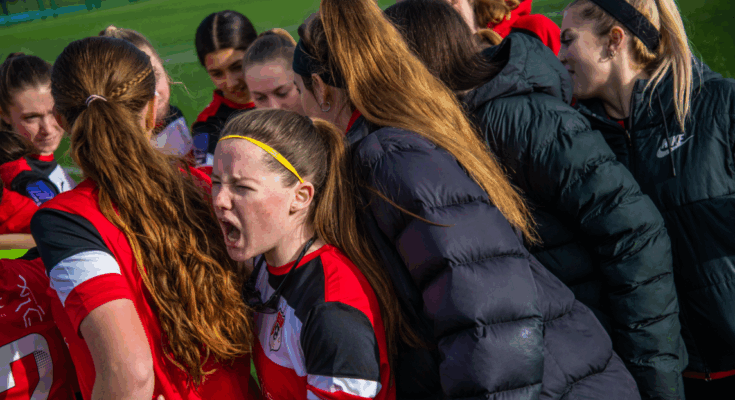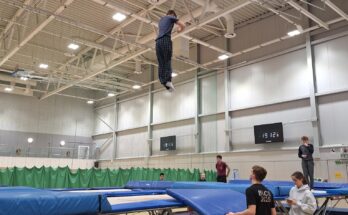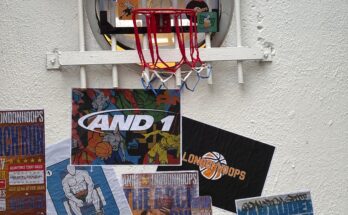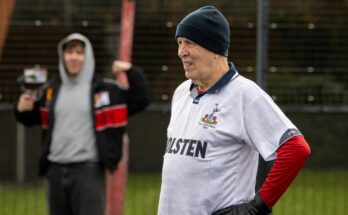A COLLECTION of features to open your eyes and expand your mind.
I am dragging away the curtain that has been hiding the truth about non-visible disabilities. In competitive mainstream sport, athletes are trained to be the best of the best, both physically and psychologically. Coaches are expected to know the why’s and the how’s and implement that training. Behind-the-scenes staff are tasked with keeping up with the ever-changing environment, and being able to work with it, and not against it.
The aim of the following stories is to make one thing clear: no matter the ailment, a human being will always be a human being.
At first, I looked inwardly. I have tried over and over again to put it into coherent written words from beginning to end, and this of course will be in the context of sport. My familiarity and understanding of non-visible disabilities through my own ASD and epilepsy diagnoses makes me appreciate those I meet in sport that have to live with similar challenges.
The Olympics, for example, is the biggest showcase of global sporting prowess. Its competitors are superhuman.
What level of superhuman must you be to achieve it all whilst battling a highly painful chronic internal condition?
What progression can you attain when your brain is computing everything differently to your peers?
What heights can you reach whilst managing a sometimes-controlling life-long neurological condition?
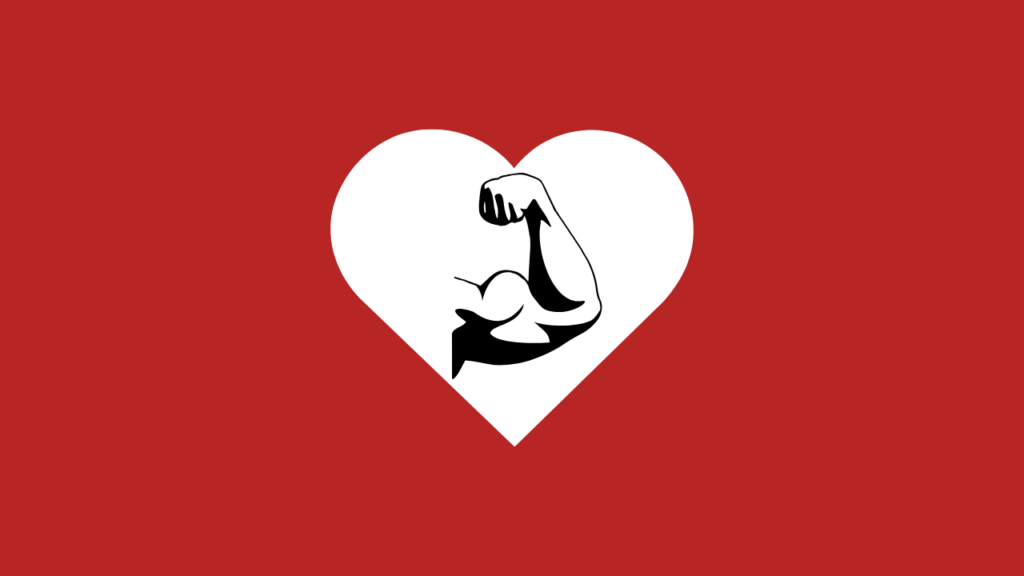
Equality Act 2010: A non-visible disability is a disability or health condition that is not immediately obvious. Conditions or illnesses that can be considered non-visible can still have physical effects, though they may not be immediately obvious or always visible.
This project would not have been possible without the work of the paramedics at the South-Central Ambulance Service, the doctors and nurses of the paediatric ICU at Southampton General Hospital, and the neurology team at Queen Alexandra Hospital, Portsmouth.
I thank the Ronald McDonald charities and the work they do to provide amazing support to families with children in hospital.
Lastly, I dedicate this project to the loving memories of Nancy Curtis and Glenn Colmer.
El Reid | On The Ground

There is a lot about a lot of things that we think we understand, but actually we don’t. There are so many things with so many layers, and so many dominos lined up one after the other waiting to fall.
Falling is a natural occurrence. Tripping, slipping, a bad tackle.
When we fall, we look for support – someone or something to steady ourselves. It’s a reflex.
But what about when everything just…
Stops.
On September 26th 2021, in a home football match, I collapsed. Gone. Like a bullet to the head. I didn’t break my fall, and I had no ability to save myself.
At the time, I was in my second season of senior women’s football. I was now a starting player, and we were comfortably 3-0 up. But just before half-time, I suffered an immediate neurological shutdown, and everything went black. Like a heart attack in my brain, but with no warning or prior telling signs.
I had test after test after test, but no clear reason behind all of it could be found. Before I went for another scan, based on how things were looking, my Mum was told she should say goodbye to me, just in case.
Two days later I woke up fully in a paediatric intensive care bay. In the time in between, I had been sedated and intubated. As I started to fade in and out of consciousness, I woke up to find tubes in my hands, arms, up my nose and between my legs. There were also wires on three parts of my chest, and some twisted around my arm.
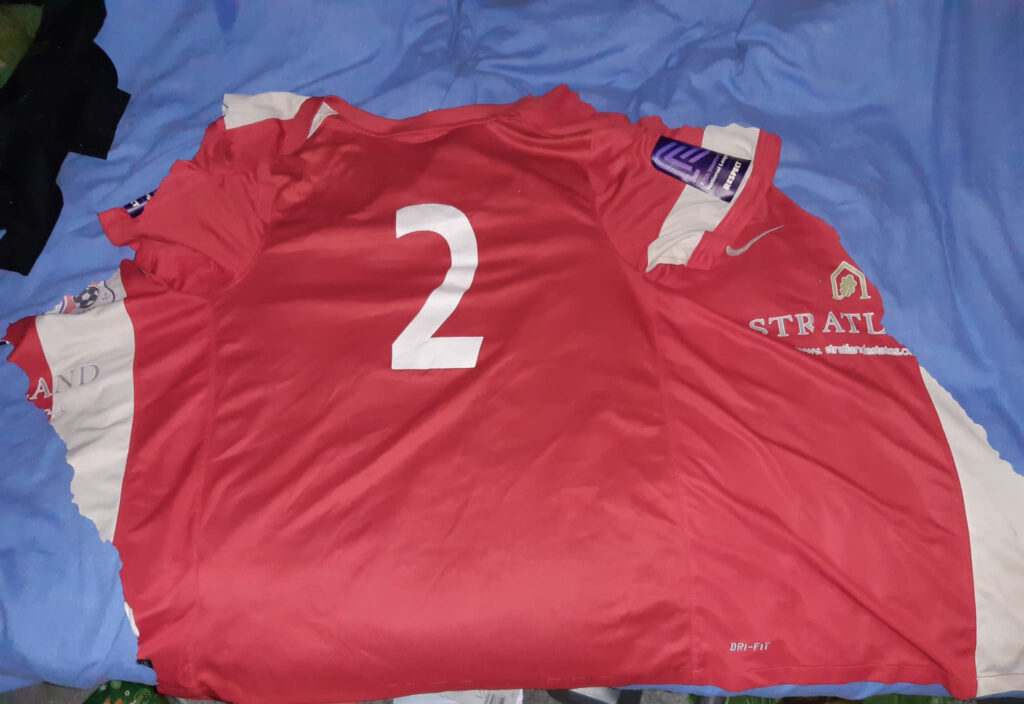
‘HURTS’, I managed to scrawl on a bit of paper.
My body was in shock and every system was desperately trying to reboot. I had always been physically fit, even with time away from training, but my body was heavy.
Eventually, all tubes and wires were detached, bar an IV drip, and I was taken to a paediatric ward. I was 17 at the time, and the oldest there.
However, just when everything was starting to look okay, I started vomiting uncontrollably, for what felt like every half an hour at least. The physical strength that I had prior tricked my mind into believing I was fit and able, despite fatigue. I then was unable to stand by myself and I overall lost thirteen kilograms in weight.
On day three, I had a lumbar puncture – a long needle is inserted into your back to collect spinal fluid for testing. I had to sit hunched over the side of the bed whilst my Dad held my shoulders. My nose wouldn’t stop running, but I still had a feeding tube up my nostril, so I had to try and breathe around a tissue that was pressed into my face. I have a voice in my head that said: “I think I’ve hit the bone.” I remember feeling three sharp pains. Three attempts, maybe. Safe to say, the slightest bit of pressure on my back for the foreseeable made me want to scream.
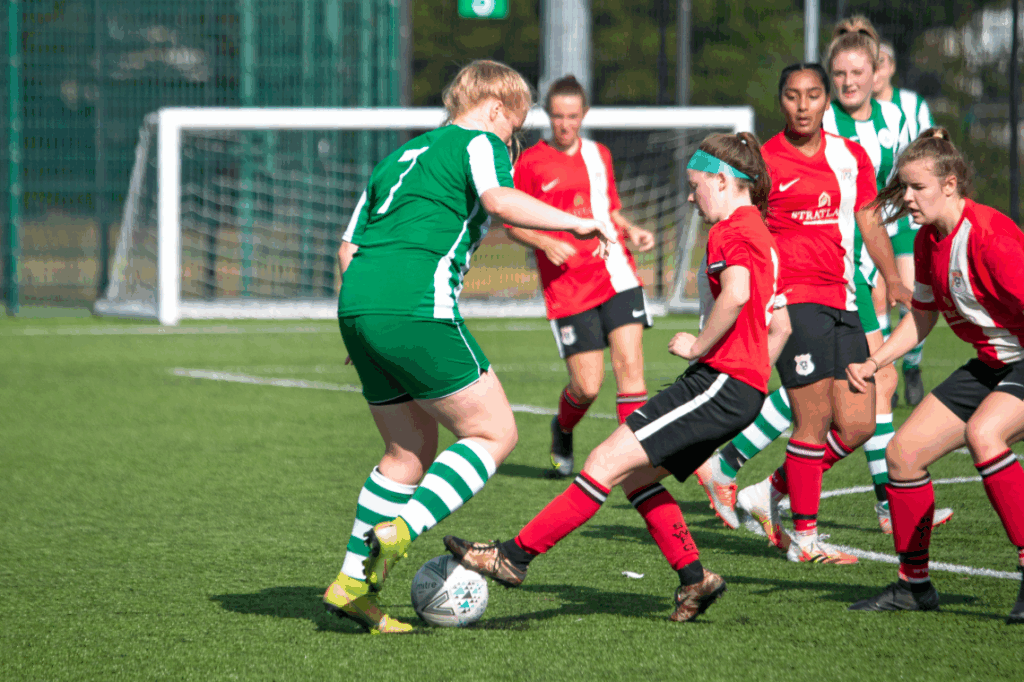
In that whole week, the only time I broke was whilst sobbing on the toilet and holding onto a paper bowl, begging to just be able to go home. I had even more tests, yet still no real cause had been identified. I was discharged after eight days.
Exactly four weeks after, I made my return to the pitch. Things happened that day that should never have, I’m above naming names, but a few days later I had my second collapse. It wasn’t in public, instead whilst locked inside a toilet cubicle, fortunately I was still fully clothed. Suddenly, I was back at square one.
I was told I couldn’t exercise, nothing more than brief walking (there was concern over my heart’s health) and that it wasn’t wise for me to leave the house by myself. My club gave me staff kit so that I could still stay involved. It had the initials ‘RH’ on the front from the original owner, so I was jokingly given the name Rhonda Humphries. Over the next few months, I underwent a series of tests for my brain and heart and was eventually discharged by the cardio team.
I had two tests for my heart – a 24-hour ambulatory ECG to assess my heart rhythms, and a cardiac stress test. The latter test did not end up going how I had envisioned. I was in sportswear as I knew I was going to be walking then running on a treadmill at increased speeds and inclines. I was asked to take my shirt and sports bra off so the electrode stickers were in the right places properly, so I was given a gown to wear.
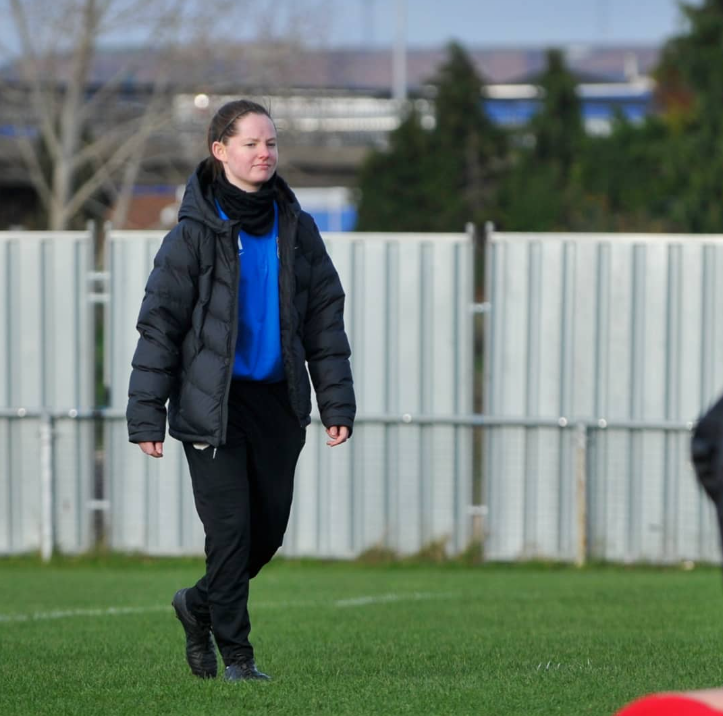
Not usually do people go to the gym bra-less and in a paper gown to run on a treadmill whilst simultaneously having their right arm outstretched to have their blood pressure manually measured. The gown did not do its job, shall we say. It was an exercise test, at the end of the day, so out of stubbornness I ran as long as I could to prove a point that I definitely did not have a heart problem.
To assess my brain, I had a 24-hour ambulatory EEG to measure and observe the electrical activity in my brain. Essentially, a series of tiny beads glued to my head with several wires that were plaited into my hair and connected to a small box that I wore on my waist.
It was two months later when I got my first neurology appointment. Over December and January, I had been having small seizures without knowing. Sometimes several in a day. Absence seizures look like an intense daydream that can’t be interrupted. I could be walking and not know where I’m going, almost not feeling my legs. I could be sitting with a group of people and lose my vision or not sense them moving. They can last just a few seconds or a bit longer, and sometimes your body can feel weak and heavy. On some occasions, my head would tip forwards.
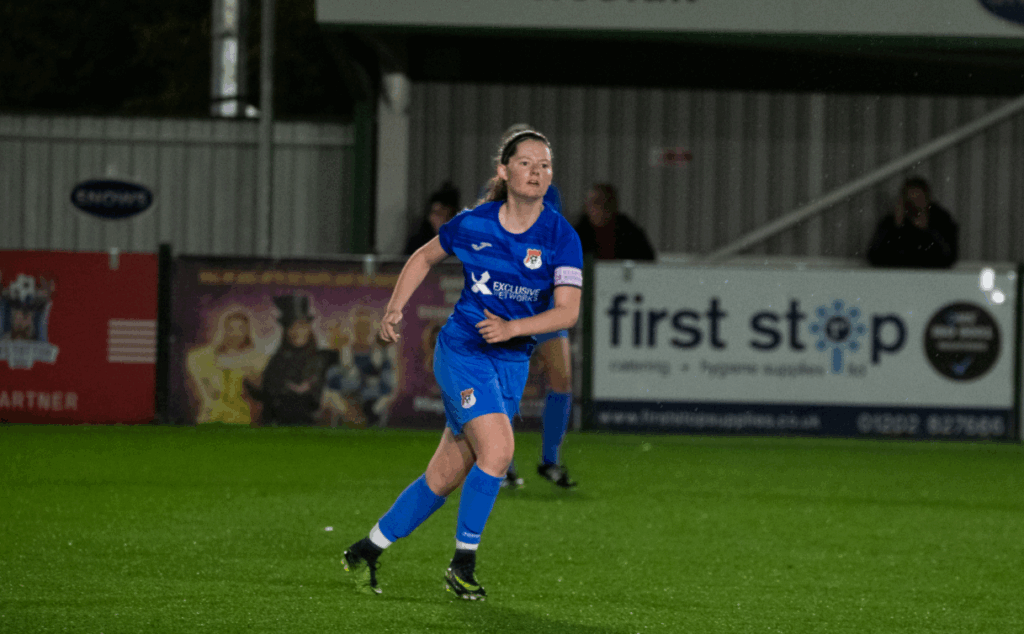
I was diagnosed with epilepsy at the beginning of February 2022, on medication, and back to playing football.
That evening, I had a Cup semi-final against local rivals. The game was tense, and I was rich in adrenaline. We won 1-0 and I was voted Player of the Match. I felt physically back to normal and confident in being back playing properly.
By the end of the week, my new medication was starting to kick in. I was not okay. And I said suddenly that I wanted to quit football. The side effects of my medication were intense and included aggression, irritability, insomnia and headaches. That whole week before it finally settled was a complete blur. I was an awful person to be around, and I said things and did things that were completely out of character. In many cases, the side effects of epilepsy medication can be worse than the seizures themselves. Lamotrigine has up to 52 possible side effects, one of which now requires me to take daily Vitamin D tablets. Epilepsy Action UK reported that 51% will become seizure-free on anti-epileptic medication, but 29% will not.
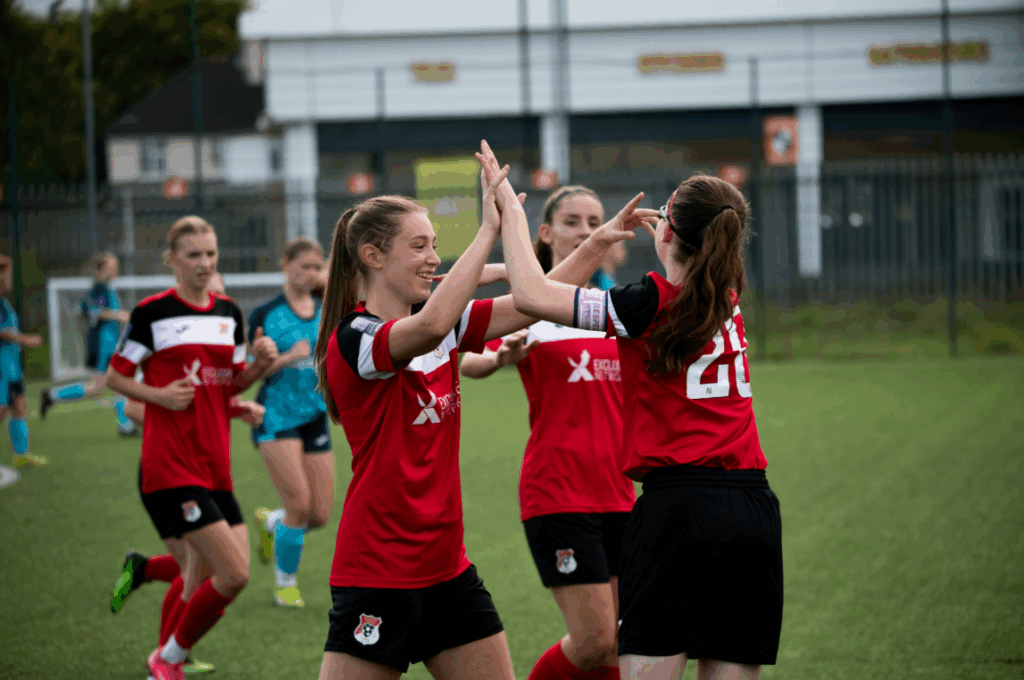
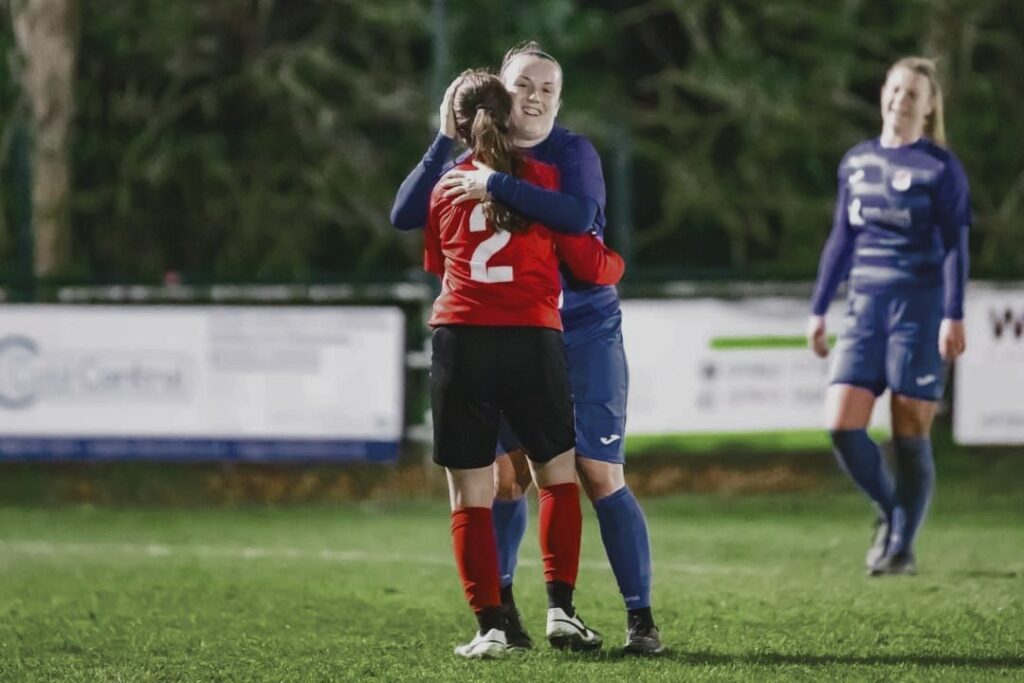
But, as the months went on, I realised I was in need of a dose increase. I wasn’t feeling right and my seizures returned. Things eventually improved, and I was able to finish the season on a high. I was presented with the Manager’s Player of the Year award at the end-of-season awards night. I was then entering my third season of senior football, and I was given co-captaincy in pre-season. I always put high demands and expectations on myself as I felt the external pressure to be 100% consistent. I was also starting my sports journalism degree and rapidly realising the impact stress and fatigue had on my health. Being autistic also means my interoception is different, so my stress goes unprocessed as my brain can’t detect it, until it’s too late. It’s a never-ending cycle.
Interoception is the ability to sense and understand internal signals and feelings.
For various reasons, I decided to completely quit playing football at the end of the 2023/24 season. In June, entirely randomly, I saw a post on Instagram about a women’s American football match happening fifteen minutes away from me, so I went to watch out of interest. I messaged them and attended a couple of training sessions. I slotted in as a wide receiver because I was quick and agile, but it took me a while to actually be able to catch the ball. Learning all of the plays was even harder – we had up to 75 for the offense. We travelled to Leicester and Cardiff and won both games, which sent us through to the British American Football Association National finals. We lost the semi-final and third-place play-off, but I was a national finalist of a sport I had only been playing for two-and-a-half months.
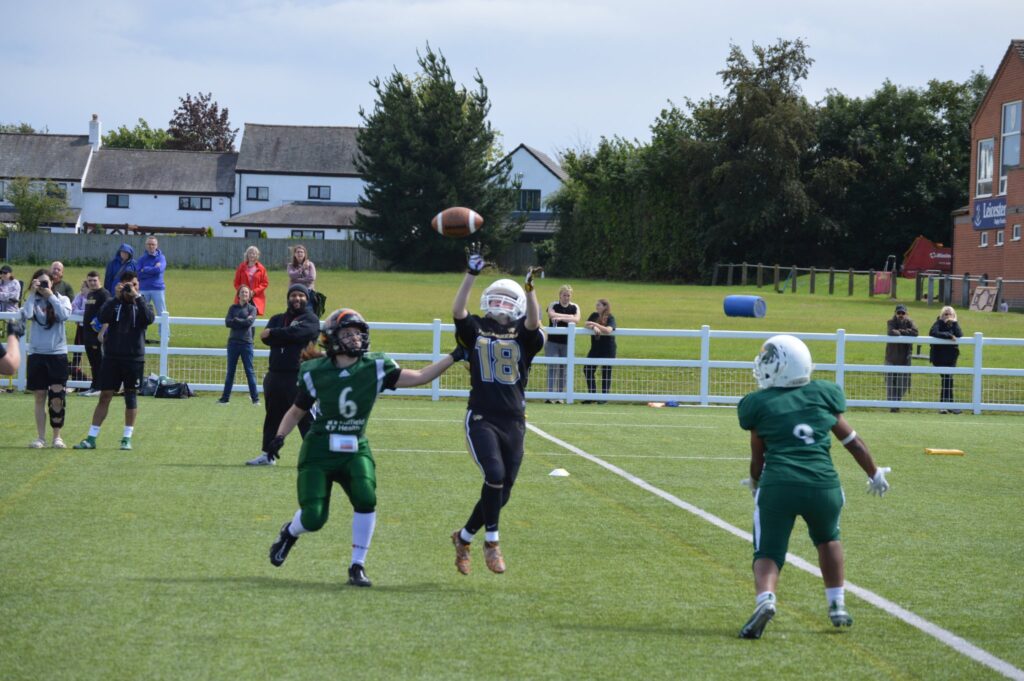
At the end of the summer, and after years of being exposed to different roles at different levels of girl’s and women’s football, I soon found my niche. Only if I wanted it, I was given the opportunity to build an online presence for the Itchen College Women’s Football Academy, which meant overseeing social content and getting to photograph and video matches. I have also led (at the time of writing) three media days and kit shoots in a photo studio. Oh. This is what I want to do. Playing no longer interested me; I wanted to work in the game as opposed to playing in it.
Fast-forward to December 28th 2023. My headphones are too tight around my neck. My sunglasses fell off my head and the lens popped out, and I was sitting in a Heathrow departure lounge trying to force myself to eat a granola yoghurt. Adrian “Jesus, Mary, Joseph and the wee donkey” Dunbar walked past with his grand-daughter. My bag was packed with documents, including an acceptance letter to complete an exchange semester at Mount Royal University. I was bricking it, to put it lightly. My Dad and I landed at Calgary International Airport approximately nine hours later. We had no set plans and no objectives except getting to our Airbnb, and meeting some of my Dad’s friends from his Army days.

I started this with incredibly graphic descriptions, so I might as well continue. What I did manage to have for breakfast found itself on the floor of the Heathrow car park. On the plane, my cupped hands ended up holding the rest. I was in a window seat, and two minutes later, the wall next to me got, shall we say, lightly decorated. It was an incredibly turbulent flight, and as soon as tires hit tarmac, I at least found a paper bag this time. We managed to collect our bags seamlessly, I headed to the toilet, and the tread of my trainer’s sole got filled with human faeces. Somehow, someone had missed the bowl.
Weirdly, I wasn’t especially stressed after we had arrived. Whilst my Dad was there with me, we skied in Banff at Sunshine Village and at the WinSport Canada Olympic Park. He then helped me to move into my apartment at the Mount Royal residences.
As part of my classes, I was a Photo Editor for the Calgary Journal and was tasked with gaining press accreditations to shoot events, and to package my own galleries and copy-edit those from student contributors. My first big event was the Crowchild Classic.
Held at the Scotiabank Saddledome, the men’s and women’s ice hockey teams of MRU and the University of Calgary play in back-to-back games in front of a crowd of over 10,000 people. I was up in the stands submerged in a wall of navy blue, and to my left was a bouncing wall of bold red. The Cougars versus the Dinos.
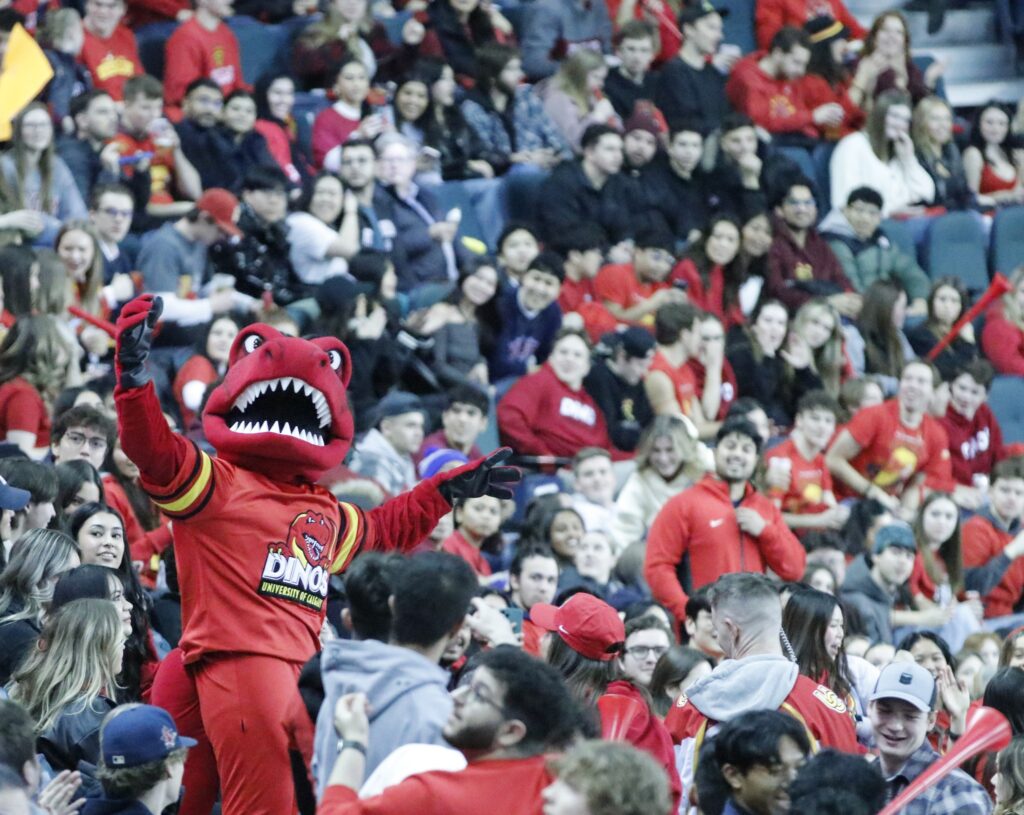
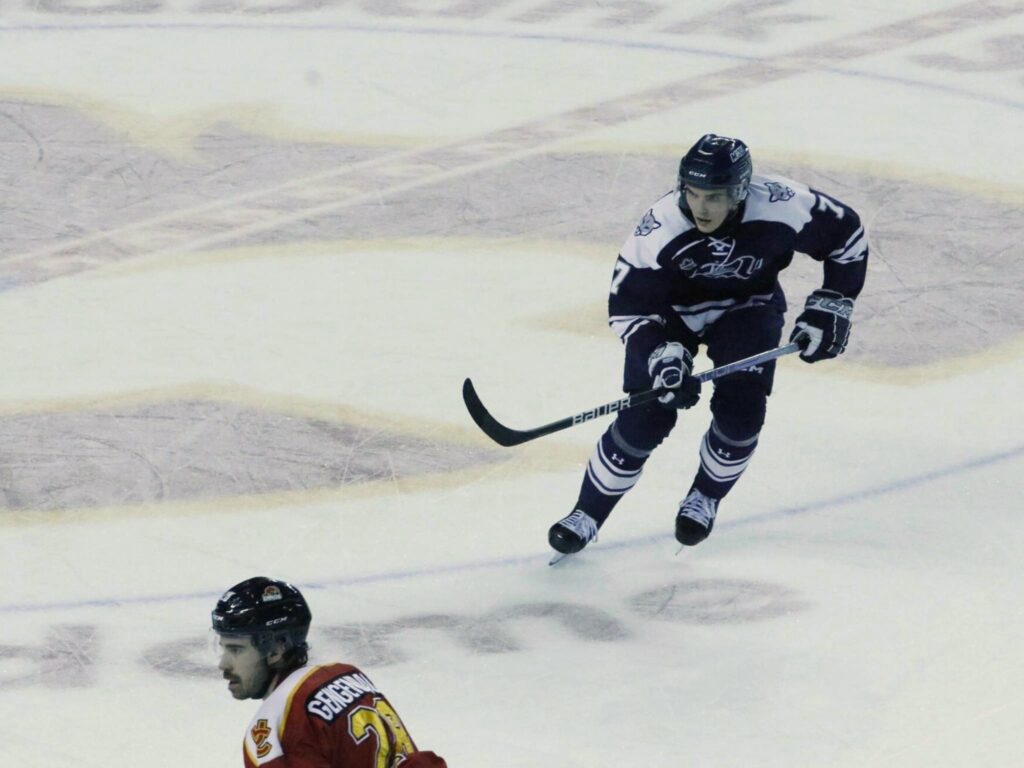
The annual event is a very big deal to the city, and the concourses were filled with merchandise stands and students handing out packets of face paint and balloon banners. In the afternoon, the campus store had been overflowing with students getting their pre-match merch that was on sale. Hoodies, baseball caps, t-shirts, pom poms – all adorned with the word ‘COUGARS’. Considering it was a university event, the entire evening was a sporting culture shock to my British mind, and it was my job to capture it.
The following month, I returned to the Olympic Park. When I had skied there, we saw them constructing a halfpipe slope, and I was now standing at the bottom of it. Calgary was hosting the FIS Freeski Halfpipe World Championships, and I filmed parts and took some photos. The weather conditions were so perfect too with crystal-clear blue skies and the right amount of sunlight reflecting off the snow. To use my roommate’s words, I was in my element. I used to watch Ski Sunday every year when I still lived at home, and now I was technically at it.
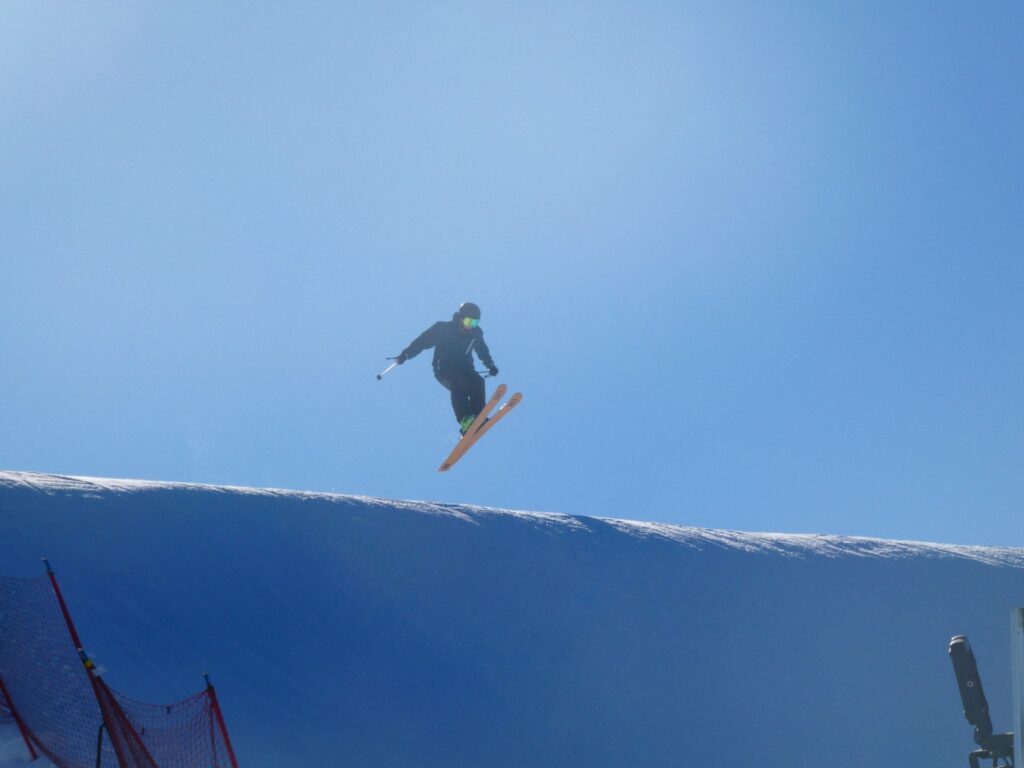
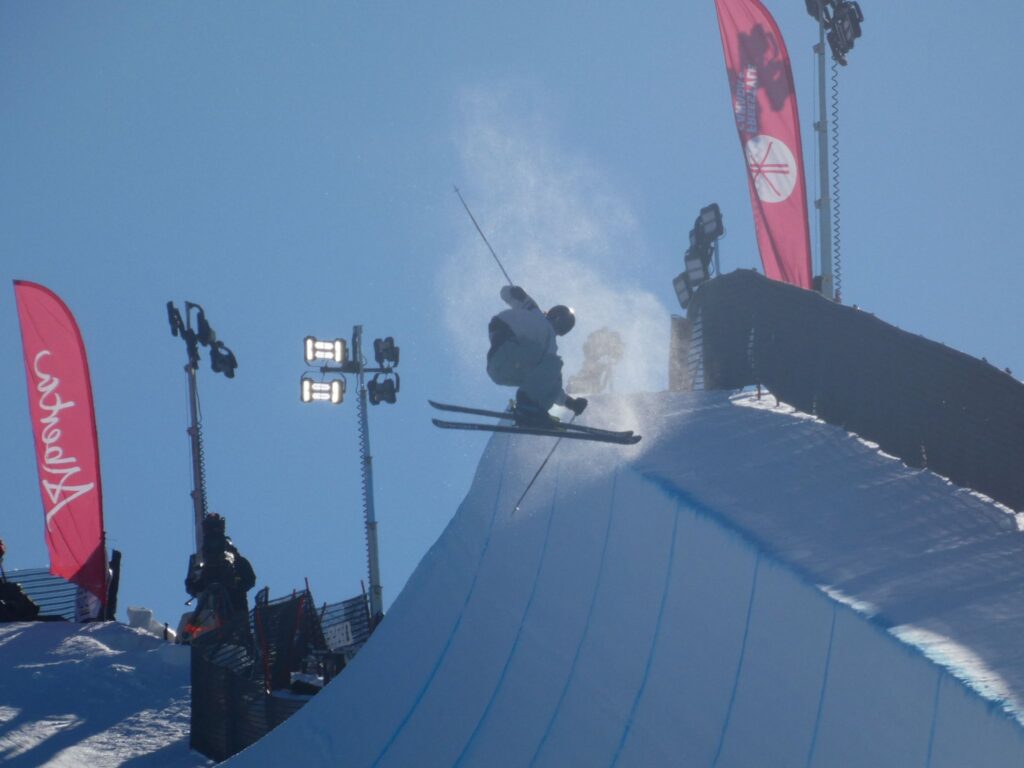
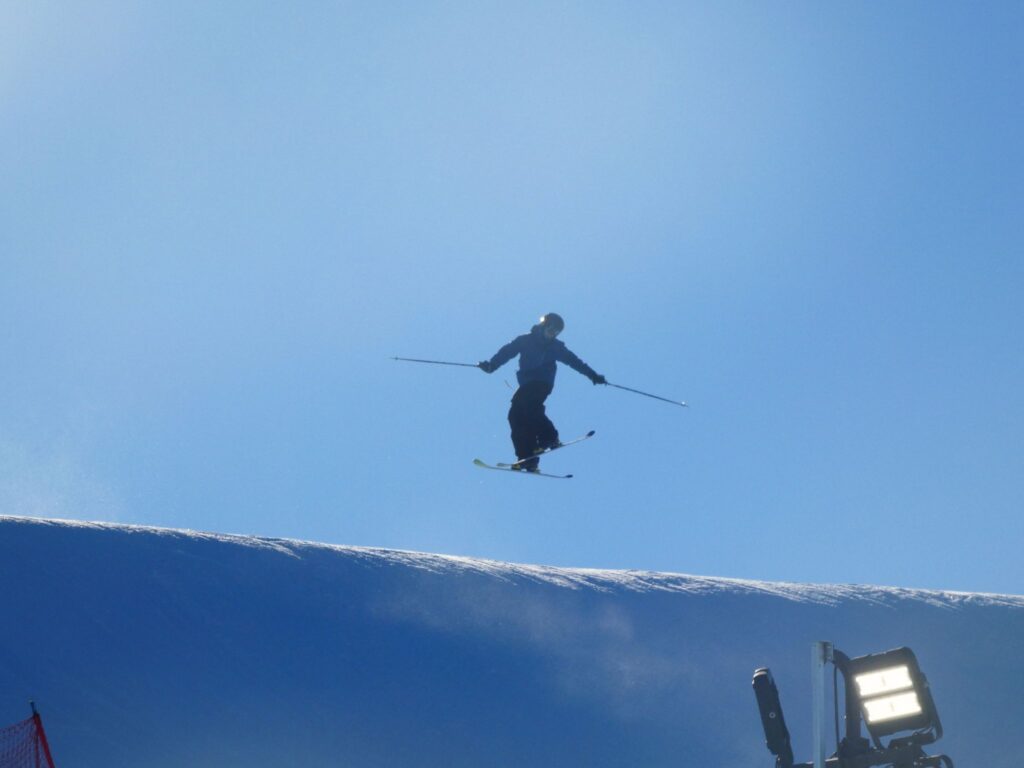
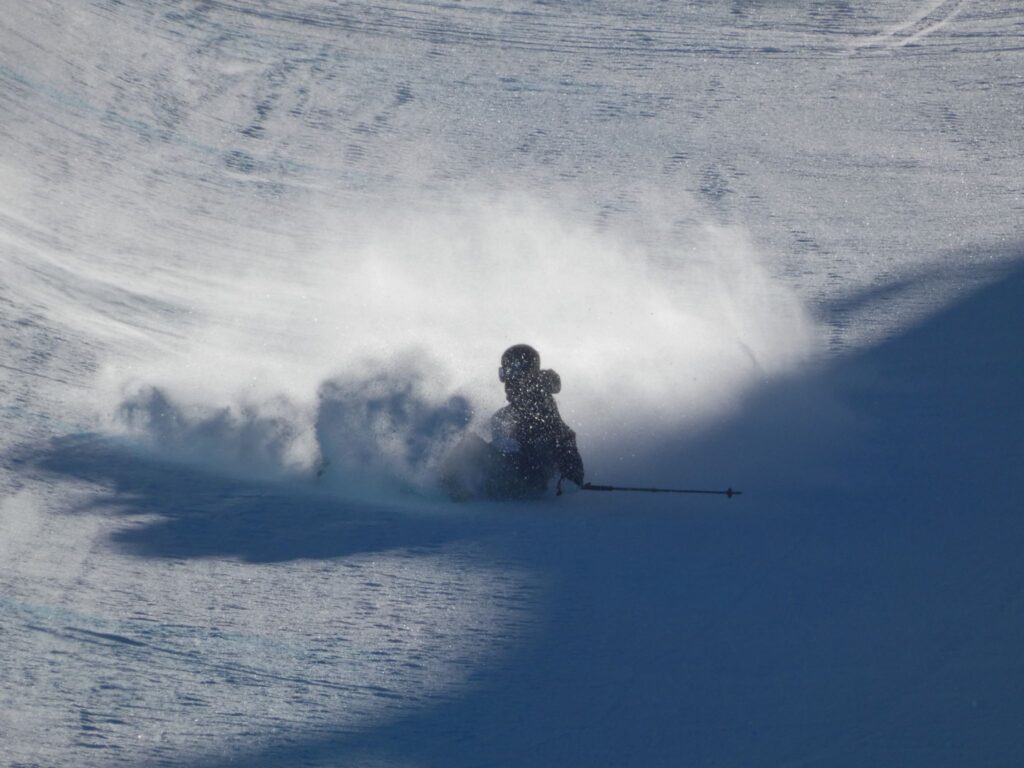
Being on a (non-sport-specific) journalism programme also allowed me to attend the opening of a submersive sensory (trippy) art exhibition as a VIP, and interview André Wickenheiser at his ‘An Evening with’ jazz concert in the Nickle Theatre.
When I came home at the end of the following April, I got stuck into my first Head of Media role, funnily enough at the club I had been playing at for the last five years. Having creative reign and utilising the things I had learned so far was great fun. Even at National League level, there is a lot to do, but just when I had established a support team to come in, I received an email.
On the same afternoon that I was having a borderline breakdown over my epilepsy, I found out that I had secured an ad hoc paid role with Southampton FC to write match reports for the Academy teams. At the time, I very much so wanted to partially stay where I was alongside the new job, but I then received a second email.
Within a week, I was sat in the Silverlake Stadium press box for a WSL League Cup fixture between Southampton FC Women and London City Lionesses, working alongside the Women’s Content Lead. Oh, I was having fun. I was at St. Mary’s Stadium the next weekend, and then on an away trip to Charlton Athletic. Afterwards, I was due to be back at St. Mary’s for a WSL Championship fixture against Durham.
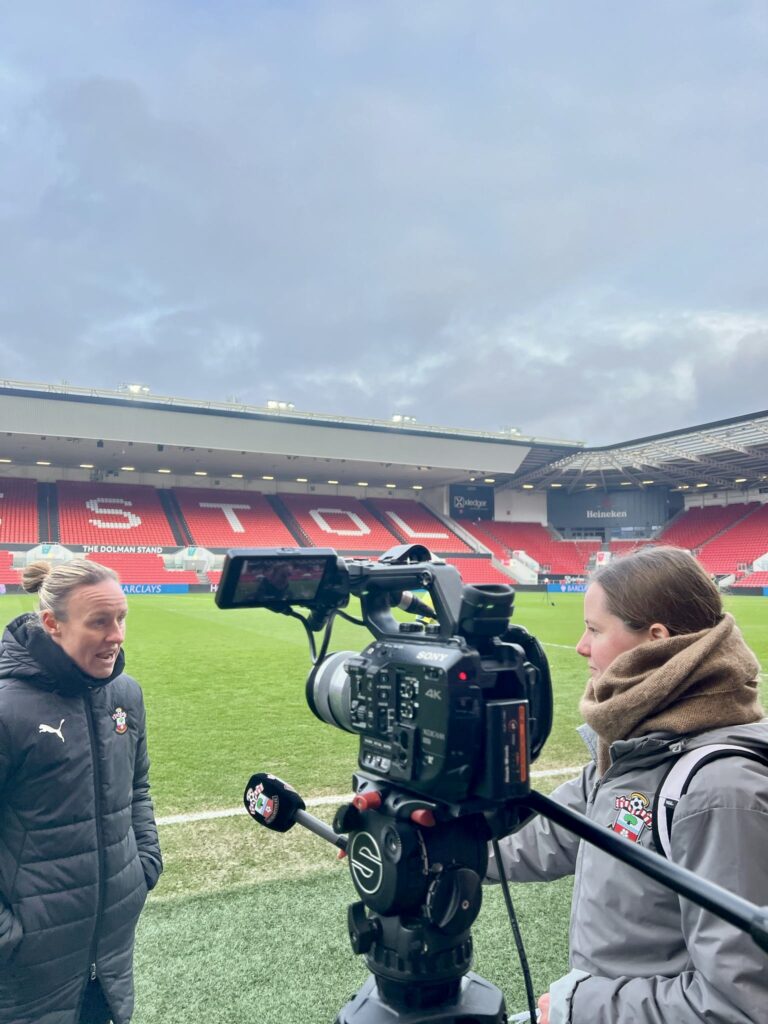
However, the sad reality of my health kicked in and at the beginning of that week I found myself in hospital again. I had suffered (dare I say, survived) a big seizure at home, fortunately in a place of safety. I became top priority in the area, and the ambulance was assisted by the critical care team. I stopped breathing, twice. Thick liquid poured out of the corner of my mouth. My body jerked twice to release bile in a projectile manner. My pulse spiked up and down so strongly that the heart rate machine could have fallen over.
The post-ictal phase is the immediate stage following a seizure, and mine lasted about 36 hours until I regained full consciousness, speech and movement. I was also in retention, which meant that I had about 750ml (a wine bottle) of liquid in my bladder that I was unable to release. So, hello catheter. As the post-ictal phase came to an end, to an unknowing passer-by I appeared completely healthy. I dressed myself, went to the toilet by myself, ate and drank by myself.
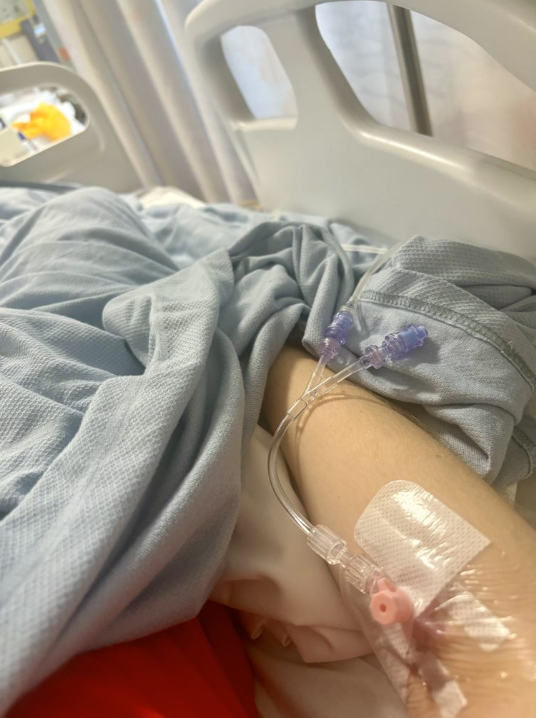
After being discharged, I had a much longer overall recovery time. ‘Tired’ probably became my most-used word for a few weeks. I was heavy, frail and nauseous. It took three weeks for me to be able to leave the house by myself and not have my legs shaking by the time I came back. I might have been on medication this time (I had just upped my dosage again only four months earlier) but it’s undeniable that my brain hadn’t exactly been getting healthier.
It might sound surprising and ridiculous, but I wasn’t scared. Nor by the potential threat of SUDEP – sudden unexpected death in epilepsy, which can happen in your sleep. It can occur with zero prior warning signs and ultimately compromises breathing. In the UK, at least 21 people die of SUDEP per week (SUDEP Action). If I were persistently scared by the thought of a seizure, then I would be nowhere but with just myself. I had zero thoughts regarding it whilst on the bus back to the Silverlake for an FA Cup match, or whilst being shown through hospitality at Hayes Lane Stadium and Ashton Gate.
I do in fact think about it every day, it’s impossible not to, but usually only when it’s quiet. And there is nothing quiet about working in women’s football. Not anymore.
It’s always weird how things come around and tie together. I borrowed my Mum’s new camera back in 2022 to film some clips of a match whilst I still wasn’t fully fit. Then I filmed another and another. And now I am where I am, having also worked with that camera on a different continent.
Before putting fingers to keys, I organised a Teams call with Daniel Jennings who works at Epilepsy Action UK, which is a national charity that supports the 630,000 people in the UK that live with epilepsy.
“With awareness training, it’s about fighting the misconceptions of the condition because the two big misconceptions we still come across is that everyone with epilepsy is photosensitive, when actually only about 3% are, and that all seizures are tonic-clonic,” Jennings said.
Tonic-clonic seizures: a type of generalized seizure that produces bilateral, convulsive tonic and clonic muscle contractions.
In my case, Jennings continued: “it can be difficult communicating visually other types of seizures like absence seizures and giving a visual indication of what they look like.”
Any complications for an epileptic partaking in sport can come from seizure triggers such as dehydration, breathing changes and over-exertion. Additionally, competitive sport increases workload and stress on the brain, for example via being exposed to multiple stimuli at once or high-pressure moments. Epilepsy is such a ranging and complicated condition that it affects people in different ways, but the generalized stereotype is that elite or contact sport could be unsafe.
“Addressing those stigmas around the condition, through our employment work, we’ve been addressing those misconceptions and have been communicating that, with just a few changes, there’s no reason why people with epilepsy can’t participate in sport.”
I think it’s easy for me to let myself be almost gaslighted into believing that I don’t have the right to feel fatigued, almost as if I have to justify it. Everyone experiences the feeling of being tired and burnt out from time to time, but not often would it ever make someone non-verbal, immobile, weak and potentially in the danger zone for a seizure.
A girl that has played sport her whole life, and is still in their early twenties, shouldn’t get sudden jelly legs or shaky hands. I don’t wish to ever be as fatigued as I can get, nor do I wish to experience the headaches that blow my pupils wide until there is no colour left in them. I wish I was exaggerating. My sister says I look like I’ve been drugged.
After November last year, what my family and I once thought were my major seizure triggers, might not be the case after all. I had been fine. Some epileptics have no clear triggers, so it makes it even harder to regulate everything. I had it said to me in 2021 that it probably won’t ever happen again, and in an emotional sense, if it did then I wouldn’t survive it. I did, though. I guess I’m not that easy to kill off. I’m like DC’s Sara Lance – she was killed three separate times on screen and still made it to the finale episode.
But I’ve never ruled out returning to the pitch, as I played a couple of games for my sister’s team in January and February of this year. When I was at MRU, I also joined one of the futsal teams with some other exchange students for the university’s intramural tournament, of which we were finalists.
However, sitting in the press box at my laptop or making edits pitch-side on my phone is now when I smile more.
*Two weeks after this feature was completed, on my 21st birthday, I was found unconscious but responsive to stimuli. I had a four to five-hour post-ictal and was fully conscious when checked in to the ED. What did it look like? It was different to the first three ‘big’ seizures in that I had consciously half-shut my door and chose to go to sleep, however I slipped into a seizure and my heart rate and body temperature was way higher than it should be. I was able to squeeze hands in response to yes/no questions, slowly opened my eyes, and could gradually sit up by myself – my speech returned last.
The Oxford Dictionary defines ‘resilience’ as “the capacity to withstand or to recover quickly from difficulties; toughness”. I might be stubborn, but nine times out of ten, I will tell you a hundred times over: yes, I can.
This feature is part of a collection, titled: Non-visible disabilities in mainstream sport
Feature 2: Beth Dobbin | The Things You Don’t See
Feature 3: Elinor Barker | Stay On Track
Feature 4: Matt Graves | Still Human
Feature 5: Emma Whitlock | Mind Minefield
